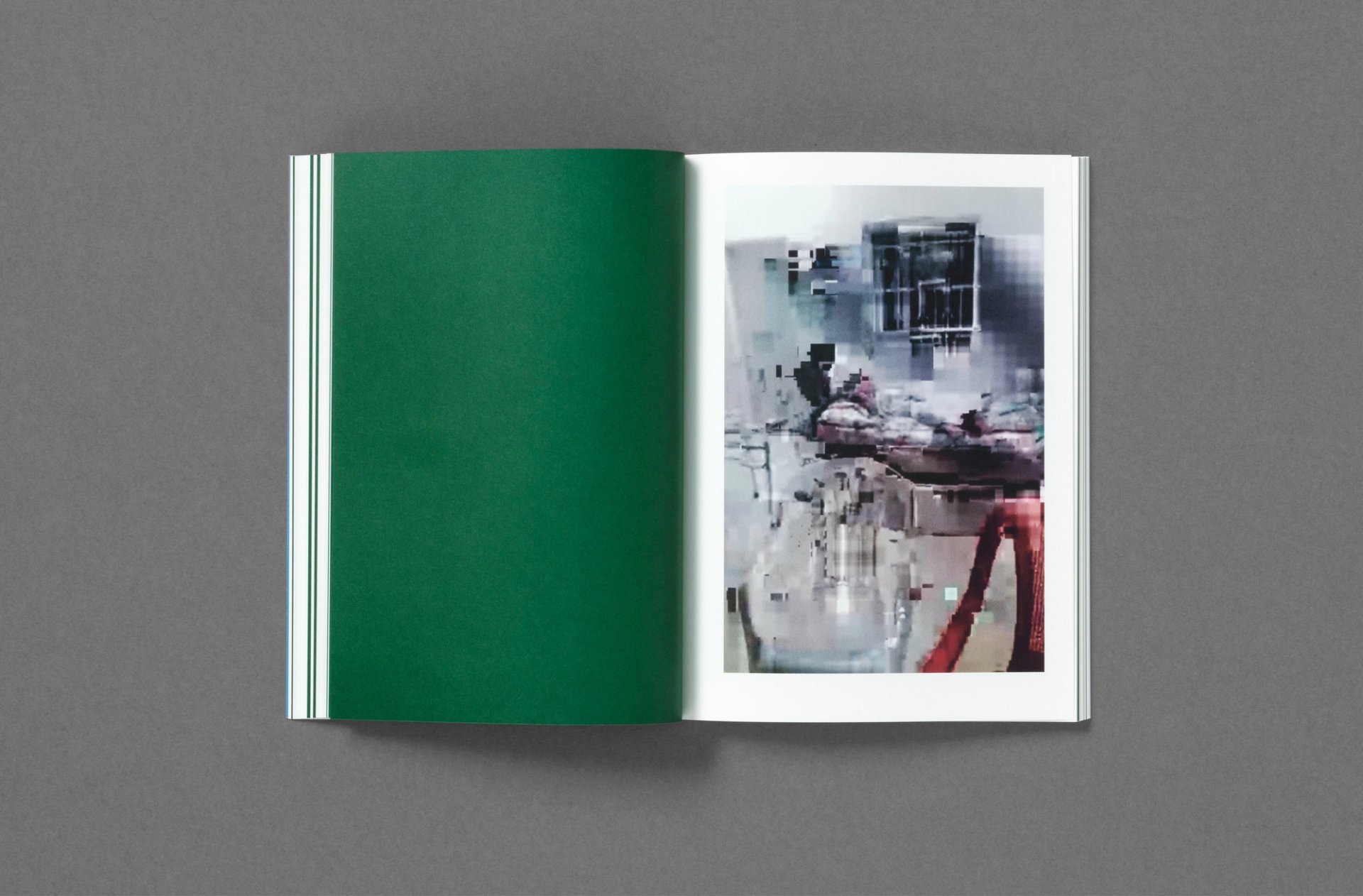It is not what you can see in the fragmented images in Taysir Batniji’s Disruptions, winner of the top honour at this year’s Paris Photo-Aperture PhotoBook Awards, that matters, but rather what is left out of the pictures.
The idea for the work dates back to 2015, prompted by WhatsApp calls with his family that were disrupted by poor connections. “The screen became totally corrupted, destroyed. I found this very intriguing,” says Batniji, who began making screengrabs.
In these images we are barely able to make out his subjects through the distortion of mangled pixels. In others we glimpse street scenes outside of his family home, located in the middle of the market in the densely packed Shuja'iyya neighbourhood outside the walls of the Old City of Gaza—now almost totally obliterated.
“I found these images interesting because they show, somehow, the difficulty to communicate, separated from my family, far from this situation,” says the Palestinian artist. “I tried to evoke the situation without being direct in my work, without having to provide a discourse explaining the suffering, the difficulties.”
Batniji, who has lived between France and Gaza for the past 30 years, created the work between 24 April 2015 and 23 June 2017. “They evoke images of war” through their broken spectacle, the photographer says, only becoming more pronounced in their deathly poignancy once the current conflict with Israel broke out.
But, for Batniji, they are also a reminder. “Many of the people that I spoke with and we can see in the images are now dead, and the places where I communicated with them have disappeared,” he explains.

“The glitch works as a reminder of distance," says Taous Dahmani, the London-based curator and art historian who wrote a text for Disruptions
Courtesy of Loose Joints
On 17 November 2023, Batniji’s sister’s house was bombed, killing her and her husband and most of their children and grandchildren—a total of 27 people lost. Less than a week later, his childhood home was destroyed, killing another 22 family members in the place where he was born and grew up, alongside a decade’s worth of work. “Paintings, drawings, documents, letters, photographs… all this disappeared in a few seconds,” he says.
After the renewed conflict in Gaza that began after the events of 7 October 2023, when an attack by Hamas killed 1,200 Israelis, and saw 253 people taken hostage, the founders of Marseilles-based publisher Loose Joints reached out to Batniji. They began to work with him on a book based on his images, the proceeds of which were donated to Medical Aid for Palestinians. In the intervening months more than 42,000 Palestinians have been killed, according to the local health ministry
Taous Dahmani, the London-based curator and art historian who wrote a text for Disruptions, says that despite their abstract appearance, the images speak tangibly of absence. “The glitch works as a reminder of distance… and the fact that you can't really see anything forces you to guess what's happening beyond the picture,” she explains.
The work also speaks of the absence of images, Dahmani says, with the censorship of independent press coverage from Gaza compounding the sense of a physical erasure of people and peoples—the victims of a high-tech military campaign.






